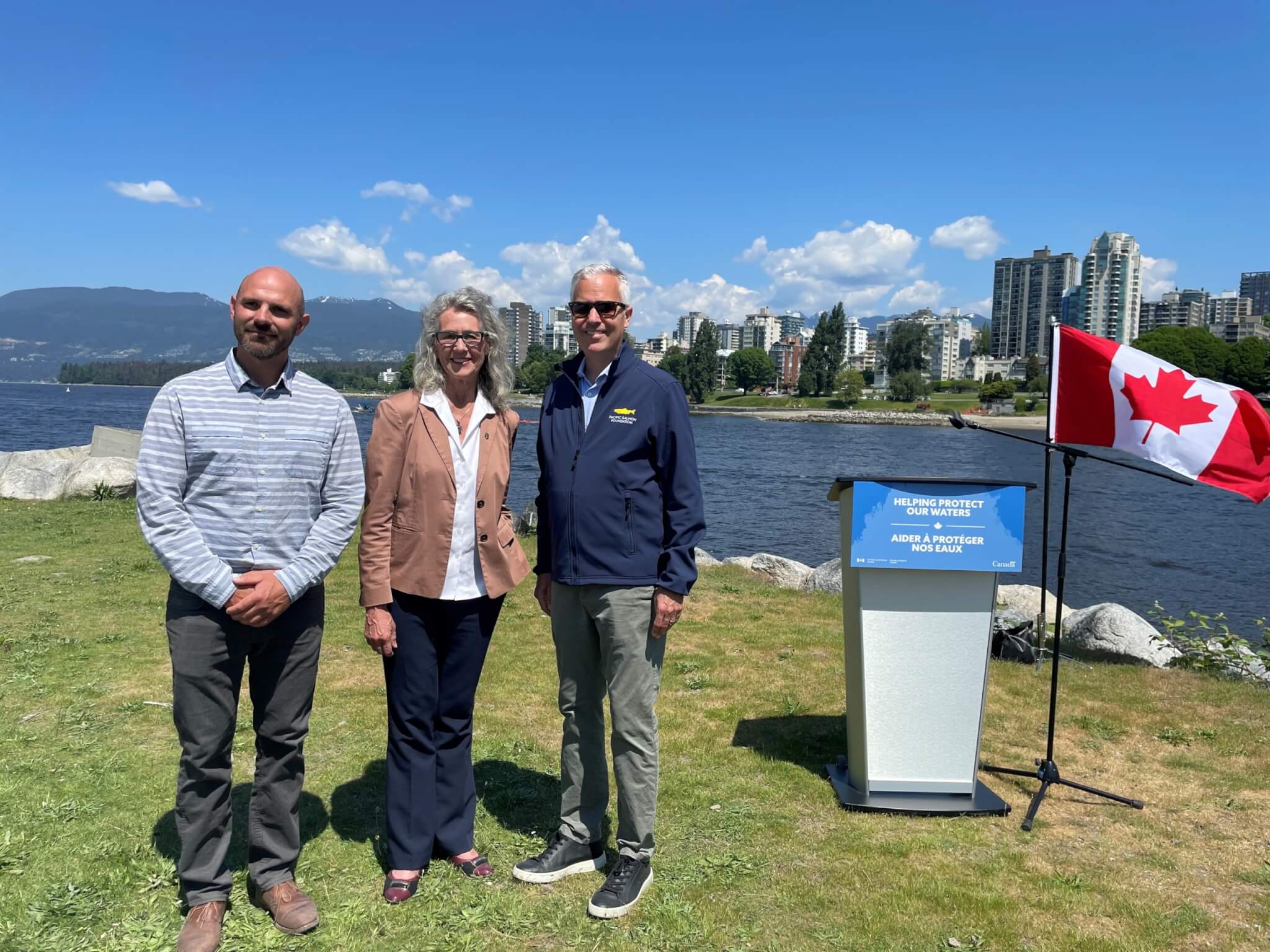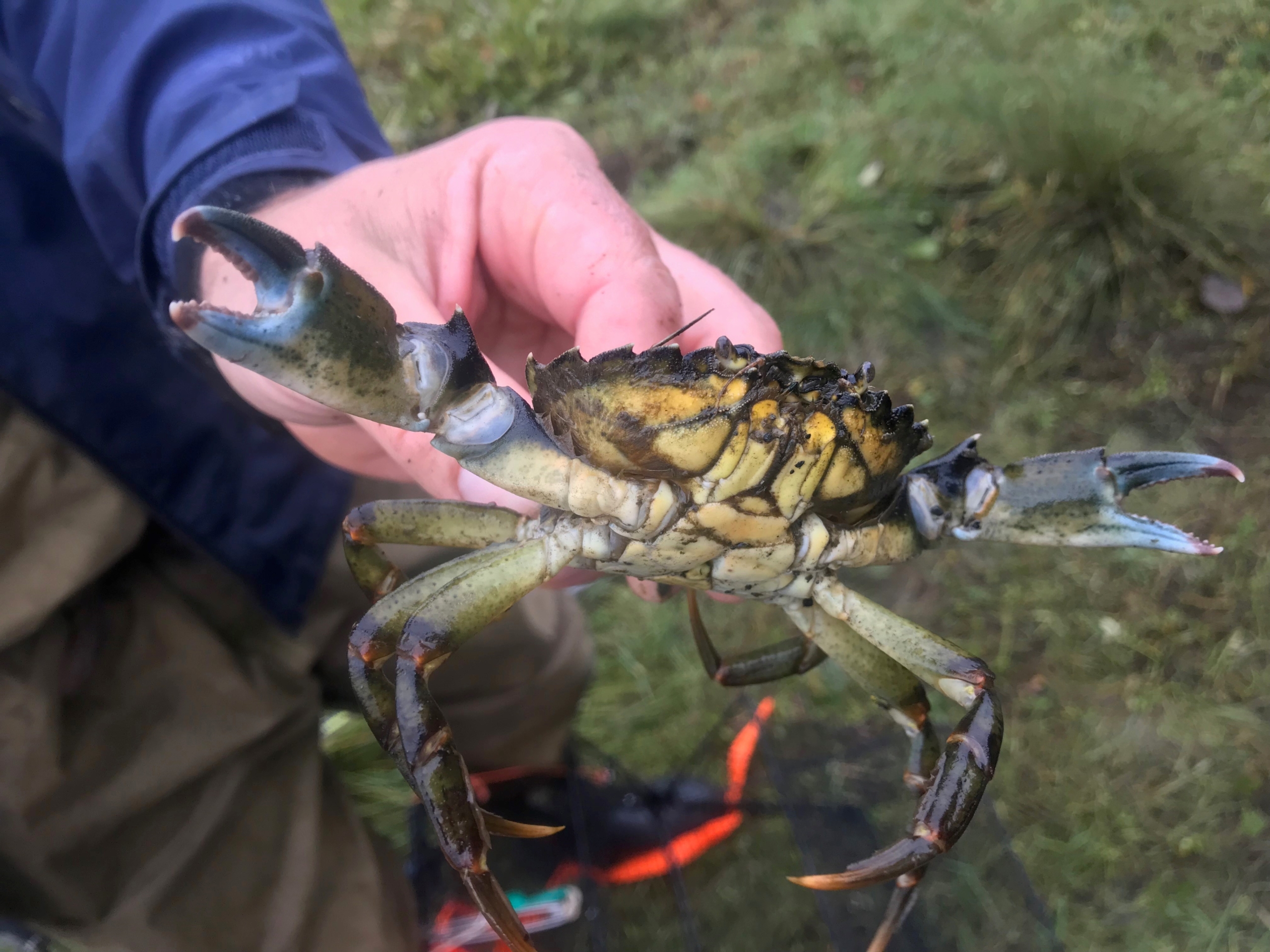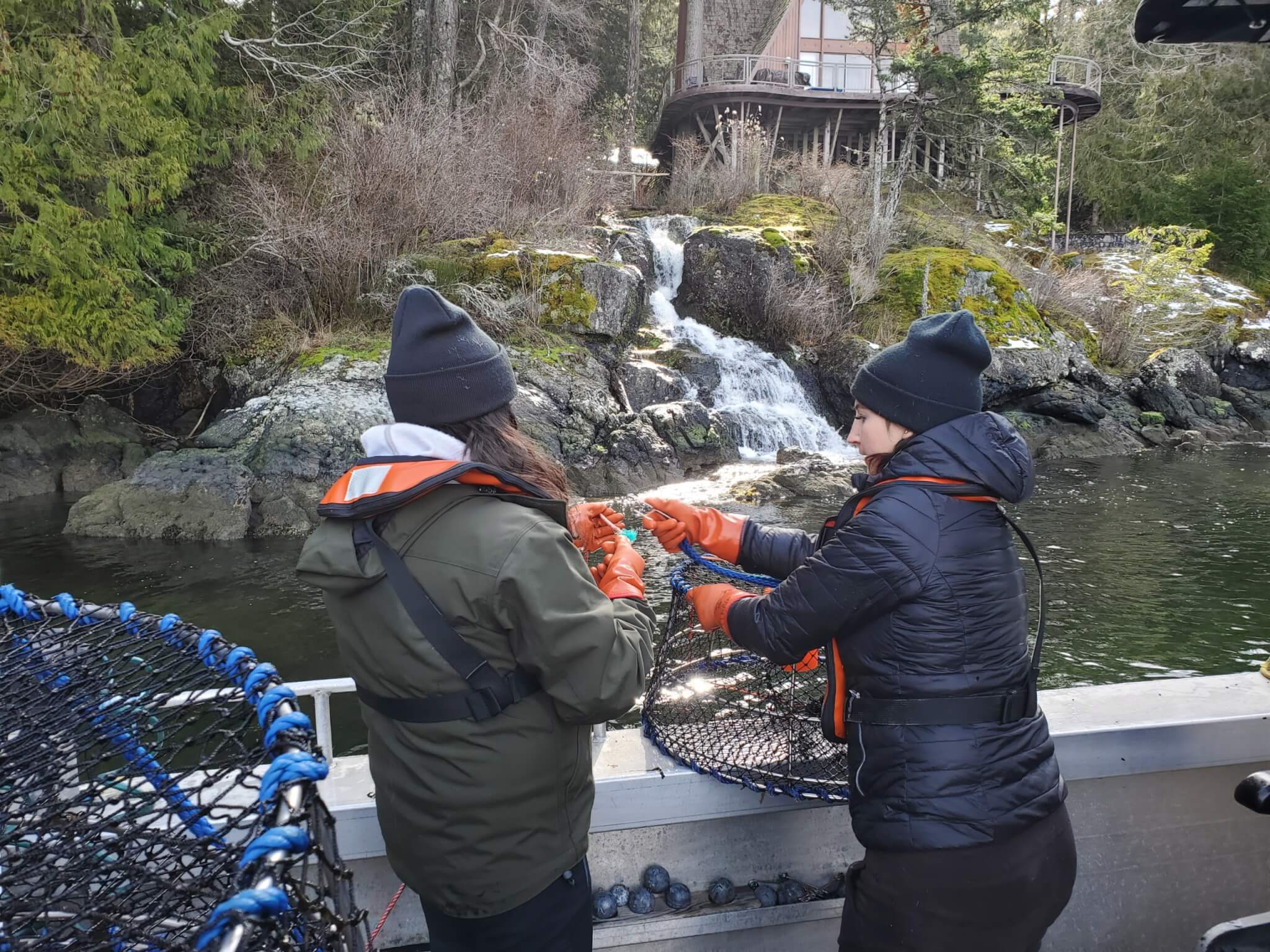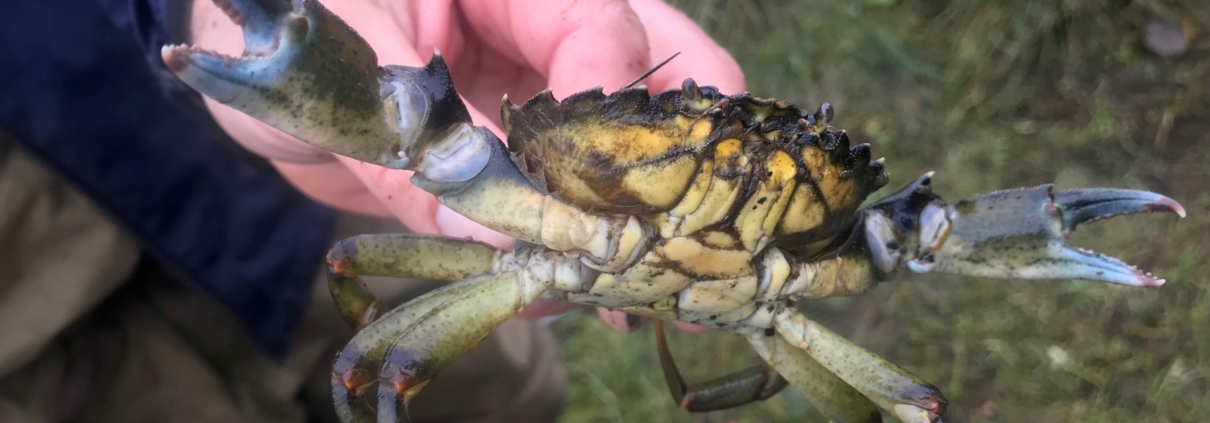European Green Crabs addressed thanks to Government of Canada funds
May 30, 2023
Last week, the Pacific Salmon Foundation was proud to take part in an announcement with the Honourable Joyce Murray, Minister of Fisheries, Oceans, and the Canadian Coast Guard, as she launched the new Aquatic Invasive Species Prevention Fund.
After habitat loss, invasive species are the second biggest threat to global biodiversity. Aquatic invasive species pose a serious threat to Canada’s waters, economy, and society.
“It is clear that we must continue to take concrete actions to preserve biodiversity across Canada, including in our waters. I am pleased to announce the Aquatic Invasive Species Prevention Fund, which will enable us to work alongside innovative organizations, Indigenous communities, and provinces and territories in partnership to protect Canadian waterways from aquatic invasive species,” says Hon. Joyce Murray.

Renny Talbot (DFO), Hon. Joyce Murray (DFO), and Michael Meneer (PSF) at the May 26 announcement of the Aquatic Invasive Species Prevention Fund.
The Pacific Salmon Foundation (PSF) received a $750,000 grant over three years in the initial round of funding to help control and manage the spread of European Green Crab in the Salish Sea. One of the 10 most unwanted species in the world, the invasive European Green Crab is making its way into shoreline ecosystems around the Strait of Georgia.
“Salmon are in serious decline across the Pacific Northwest and we need to accelerate work to reduce the limiting factors working against Pacific salmon. Working to control and remove invasive species is one of the important levers that we can pull for Pacific salmon. Importantly, salmon are resilient and by working together, with partners and funding support from Crown Government and passionate members of the public, we can support their recovery,” says Michael Meneer, CEO and president of the Pacific Salmon Foundation.
These small coastal crabs are very resilient and can survive being out of water for more than five days, and can tolerate a broad range of temperatures. They have significant consequences for marine ecosystems because they out-compete native species and destroy eelgrass plants. Eelgrass meadows provide food and cover for juvenile salmon, forage fish such as herring, and many other aquatic species that feed the food web.

Through outreach and capacity building with Indigenous and non-Indigenous partners, the PSF project, in collaboration with Coastal Restoration Society, focuses on providing training to coastal communities within the Salish Sea, northern portions of the South Coast, and the Central and North Coasts of British Columbia to identify these invasive species.
“Over the past two years, we’ve been working on an intense targeted trapping program of European Green Crab in Sooke and Clayoquot Sound to develop and test trapping methods. Through this work, it’s common to pull traps with hundreds of green crabs,” says Ryan Chamberland with Coastal Restoration Society.
Through the partnership with PSF, Chamberland hopes to get ahead of the spread of green crab into other coastal regions by monitoring their movements. He also underscores the need to better understand the true impacts that European Green Crab have on native species, specifically eelgrass due to the current concerning state of herring and salmon in the region.

Team members from Coastal Restoration Society and Pacific Salmon Foundation practice sampling by boat for the ‘Early Detection & Monitoring project for invasive European Green Crab’ project.
The Aquatic Invasive Species Prevention Fund will strengthen partnerships between the federal government, provinces and territories, Indigenous communities, stakeholders, and the general public. These partnerships will facilitate on-the-ground, preventative actions against aquatic invasive species as well as education, outreach, detection and response activities.
The Government of Canada shares that preventing the introduction, establishment, and spread of aquatic invasive species is the most cost-effective way of limiting their harm and contributes to the protection of Canada’s waters in the fight against biodiversity loss.



